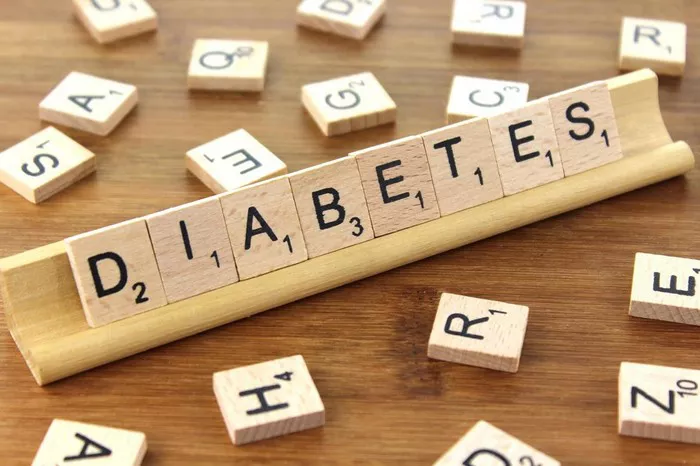Type 2 diabetes mellitus is a prevalent and serious condition that affects millions of people worldwide. It arises due to a combination of genetic, lifestyle, and environmental factors. The primary feature of T2DM is hyperglycemia, which occurs due to the body’s inability to use insulin effectively, often combined with an inadequate insulin secretion response. Over time, sustained high blood sugar levels can lead to various complications affecting multiple organs, including the heart, kidneys, eyes, and nerves. However, a subset of patients presents with type 2 diabetes without complications. Understanding this stage is crucial for healthcare providers, as it offers a window of opportunity for intensive management to prevent or delay the onset of complications.
Definition of Type 2 Diabetes Mellitus Without Complications
Type 2 diabetes mellitus without complications refers to a stage of the disease where hyperglycemia is present, but the patient has not yet developed any of the chronic complications typically associated with diabetes. These complications can be broadly categorized into macrovascular (such as cardiovascular disease) and microvascular (such as retinopathy, nephropathy, and neuropathy) complications. Patients at this stage may exhibit symptoms of diabetes, such as increased thirst, frequent urination, fatigue, and blurred vision, but they do not show clinical signs of organ damage or secondary conditions linked to prolonged hyperglycemia.
Pathophysiology
The pathophysiology of type 2 diabetes without complications involves the interplay between insulin resistance and beta-cell dysfunction. Insulin resistance primarily occurs in liver, muscle, and adipose tissues, where the cells do not respond adequately to insulin. This leads to decreased glucose uptake and increased hepatic glucose production, contributing to hyperglycemia. Initially, the pancreas compensates by producing more insulin, but over time, beta-cell function deteriorates, and insulin secretion becomes insufficient to maintain normoglycemia.
Insulin Resistance
Insulin resistance is a key feature of T2DM and involves multiple mechanisms. One significant factor is the downregulation of insulin receptors on the surface of target cells, which reduces glucose uptake. Additionally, post-receptor signaling defects impair the action of insulin within cells. Adipose tissue dysfunction also plays a role, as excess fat, particularly visceral fat, secretes adipokines and inflammatory cytokines that exacerbate insulin resistance.
Beta-cell Dysfunction
Beta-cell dysfunction in T2DM is characterized by a progressive decline in insulin secretion. This decline is partly due to glucotoxicity and lipotoxicity, where chronic high levels of glucose and free fatty acids damage beta cells. Genetic factors and chronic inflammation also contribute to beta-cell failure. As a result, insulin levels become inadequate to overcome insulin resistance, leading to persistent hyperglycemia.
Clinical Presentation and Diagnosis
Patients with type 2 diabetes without complications may present with various symptoms, although some individuals may be asymptomatic, especially in the early stages. Common symptoms include:
- Polydipsia (increased thirst)
- Polyuria (frequent urination)
- Polyphagia (increased hunger)
- Unintended weight loss
- Fatigue
- Blurred vision
Diagnostic Criteria
The diagnosis of T2DM is based on specific criteria, typically involving blood glucose measurements. The following are standard diagnostic criteria:
- Fasting Plasma Glucose (FPG): ≥126 mg/dL (7.0 mmol/L) after an overnight fast.
- 2-hour Plasma Glucose: ≥200 mg/dL (11.1 mmol/L) during an oral glucose tolerance test (OGTT).
- Hemoglobin A1c (HbA1c): ≥6.5%.
- Random Plasma Glucose: ≥200 mg/dL (11.1 mmol/L) in a patient with classic symptoms of hyperglycemia.
For a diagnosis of type 2 diabetes without complications, these criteria are met without evidence of microvascular or macrovascular complications.
Importance of Early Diagnosis and Management
Early diagnosis and management of type 2 diabetes without complications are critical for several reasons. First, it allows for the implementation of lifestyle and pharmacological interventions that can help maintain blood glucose levels within the target range, thereby reducing the risk of developing complications. Second, early intervention can preserve beta-cell function, potentially prolonging the period of relative insulin sufficiency.
Lifestyle Modifications
Lifestyle modifications are the cornerstone of managing type 2 diabetes, particularly in the absence of complications. These include:
- Diet: A balanced diet rich in vegetables, fruits, whole grains, lean proteins, and healthy fats is essential. Reducing the intake of refined sugars and saturated fats can help control blood glucose levels and improve insulin sensitivity.
- Physical Activity: Regular physical activity, such as walking, cycling, or swimming, enhances insulin sensitivity and aids in weight management. Aim for at least 150 minutes of moderate-intensity exercise per week.
- Weight Management: Achieving and maintaining a healthy weight can significantly improve insulin sensitivity and glycemic control. Even modest weight loss (5-10% of body weight) can have substantial benefits.
Pharmacological Interventions
In addition to lifestyle changes, pharmacological interventions may be necessary to achieve optimal glycemic control. Commonly used medications include:
- Metformin: Often the first-line treatment for T2DM, metformin improves insulin sensitivity and reduces hepatic glucose production. It is well-tolerated and has a favorable safety profile.
- Sulfonylureas: These drugs stimulate insulin secretion from the pancreas. They are effective but can cause hypoglycemia and weight gain.
- DPP-4 Inhibitors: These medications enhance incretin hormone levels, which increase insulin secretion and decrease glucagon production in a glucose-dependent manner.
- GLP-1 Receptor Agonists: These agents mimic the action of incretin hormones, promoting insulin secretion and satiety while reducing glucagon levels and delaying gastric emptying.
- SGLT2 Inhibitors: These drugs reduce glucose reabsorption in the kidneys, promoting glucose excretion in the urine. They also offer cardiovascular and renal benefits.
Monitoring and Follow-up
Regular monitoring and follow-up are essential for patients with type 2 diabetes without complications to ensure that glycemic control is maintained and to detect any early signs of complications. Key aspects of monitoring include:
Blood Glucose Monitoring
- Self-Monitoring of Blood Glucose (SMBG): Patients should be educated on how to monitor their blood glucose levels at home using a glucometer. The frequency of SMBG varies depending on the treatment regimen and individual patient needs.
- Continuous Glucose Monitoring (CGM): CGM devices provide real-time glucose readings and trends, helping patients and healthcare providers make informed decisions about treatment adjustments.
Laboratory Tests
- HbA1c: This test provides an average blood glucose level over the past 2-3 months. It should be measured at least twice a year in patients meeting treatment goals and quarterly in those whose therapy has changed or who are not meeting glycemic targets.
- Lipid Profile: Dyslipidemia is common in T2DM and should be monitored regularly to assess cardiovascular risk.
- Renal Function Tests: Serum creatinine and estimated glomerular filtration rate (eGFR) should be measured to assess kidney function.
Blood Pressure Monitoring
Hypertension is a common comorbidity in T2DM and contributes to the risk of cardiovascular and renal complications. Blood pressure should be monitored regularly, with a target of <140/90 mmHg for most patients, and lower for those with a higher risk of cardiovascular disease.
Patient Education and Support
Patient education and support play a vital role in managing type 2 diabetes without complications. Educating patients about the nature of their condition, the importance of lifestyle modifications, medication adherence, and regular monitoring can empower them to take an active role in their care.
Diabetes Self-Management Education and Support (DSMES)
DSMES programs are designed to provide patients with the knowledge and skills they need to manage their diabetes effectively. These programs cover various topics, including:
- Understanding Diabetes: Basic information about the disease, its causes, and its effects on the body.
- Healthy Eating: Guidance on creating a balanced meal plan, reading food labels, and making healthy food choices.
- Physical Activity: Tips for incorporating regular physical activity into daily routines.
- Monitoring and Medications: Instructions on how to monitor blood glucose levels, use medications correctly, and recognize and manage hypoglycemia and hyperglycemia.
- Problem-Solving: Strategies for managing diabetes during illness, stress, and travel.
Psychological Support
Living with diabetes can be challenging, and many patients experience emotional distress, anxiety, or depression. Providing psychological support through counseling or support groups can help patients cope with the emotional aspects of diabetes management.
Preventing Complications
The primary goal in managing type 2 diabetes without complications is to prevent the onset of complications. This requires a multifaceted approach that includes:
Glycemic Control
Maintaining blood glucose levels within the target range is crucial for preventing complications. The American Diabetes Association (ADA) recommends an HbA1c target of <7% for most nonpregnant adults, with individualized targets based on patient characteristics and preferences.
Cardiovascular Risk Reduction
Patients with T2DM are at increased risk for cardiovascular disease. Strategies to reduce this risk include:
- Lipid Management: Statin therapy is recommended for most patients with T2DM to achieve LDL cholesterol targets.
- Antihypertensive Therapy: Controlling blood pressure with appropriate medications, such as ACE inhibitors, ARBs, or calcium channel blockers.
- Antiplatelet Therapy: Aspirin may be considered for primary prevention in patients at high cardiovascular risk and for secondary prevention in those with established cardiovascular disease.
Renal Protection
Preventing diabetic nephropathy involves optimizing glycemic control and managing blood pressure. The use of ACE inhibitors or ARBs is recommended for patients with albuminuria to protect kidney function.
Eye Care
Regular eye examinations are essential to detect and treat diabetic retinopathy early. Patients with T2DM should have a comprehensive dilated eye exam at the time of diagnosis and annually thereafter.
Neuropathy Screening
Annual screening for diabetic neuropathy, including a thorough foot examination, is recommended. Early detection and management of neuropathy can prevent foot ulcers and lower-extremity amputations.
See also: How to Control Type 2 Diabetes
Conclusion
Type 2 diabetes mellitus without complications represents a critical stage in the disease continuum where proactive management can prevent or delay the onset of complications. Early diagnosis, lifestyle modifications, appropriate pharmacological therapy, regular monitoring, and patient education are essential components of effective management. By focusing on these areas, healthcare providers can help patients achieve better glycemic control, improve their quality of life, and reduce the burden of diabetes-related complications.
Related topics:
What To Add To Metformin To Lower A1c

























